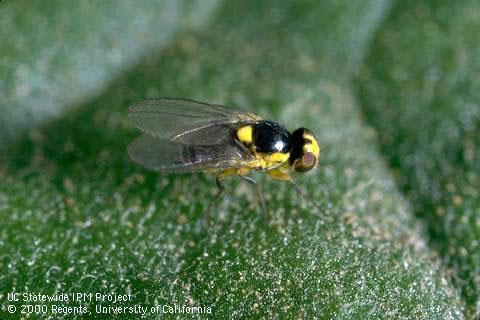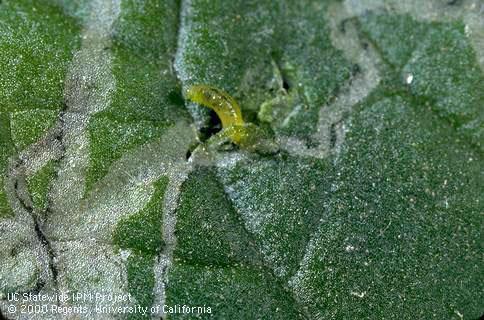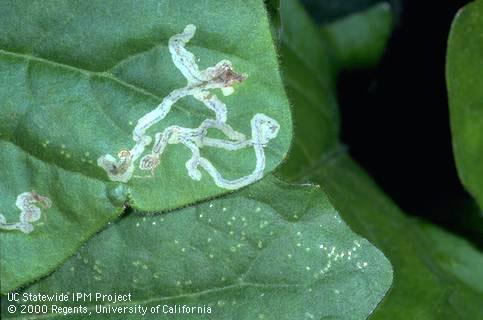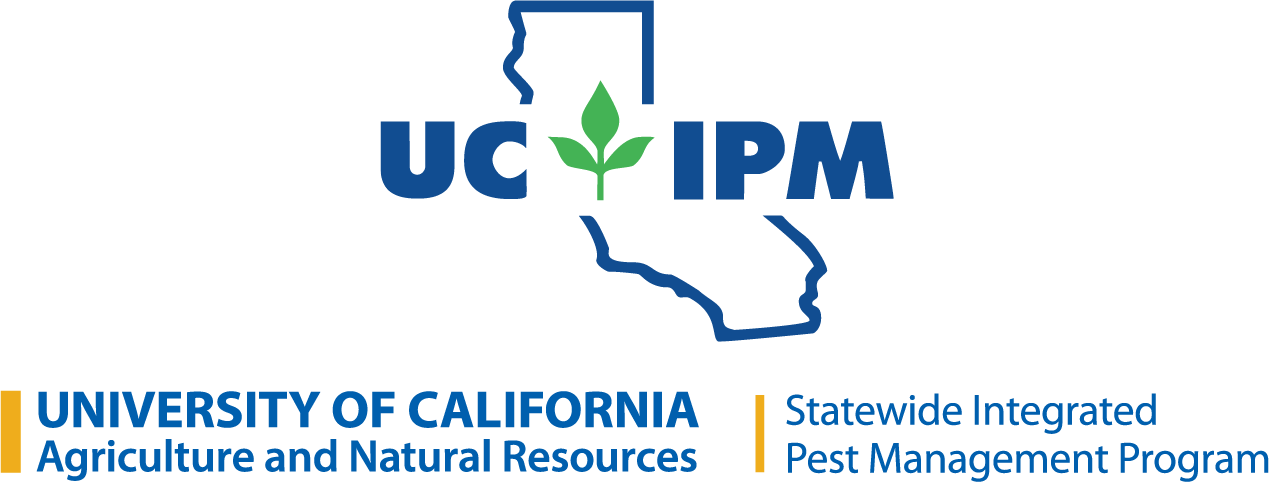On vegetables, the most common leafminers are the larvae of small flies belonging to the genus Liriomyza, including the vegetable leafminer (L. sativae), serpentine leafminer (L. trifolii), and the pea leafminer (L. langei).
Identification
Adult leafminers are small, active, black flies often with a prominent yellow triangle between the bases of the wings. The head behind the eyes is mostly black. Other species may have the thorax covered with overlapping bristles that give fresh specimens a silvery gray color with the area behind the eyes yellow. Larvae are yellow cylindrical maggots that feed beneath the leaf surface. The yellowish maggots and brown, seedlike pupae of the two species are too similar to distinguish.

Life Cycle
In warm weather, leafminers may be more active. The life cycle is only 2 weeks long. Eggs are inserted into leaves and larvae feed between leaf surfaces, creating a "mine." At high population levels, entire leaves may be covered with mines. Mature larvae leave the mines, dropping to the ground to pupate. There can be five to ten generations per year. Development continues all year, the population moving from one host to another as new host plants become available each season.

Damage
Leafminers attack many different vegetable and flower hosts, including cole crops, cucurbits, tomatoes, peas, beans, aster, begonia, dahlia, impatiens, lily, marigold, petunia, and verbena. Adult female leafminers puncture leaves and sometimes petals to feed on exuding sap. These punctures eventually turn white, giving foliage a stippled or speckled appearance. The most obvious evidence of leafminers is the twisting trails (or mines) the larvae leave as they feed beneath the leaf surface. The mine becomes longer and wider as the larva grows. Mining usually has little impact on plant growth and rarely kills plants. Unusually heavy damage can slow plant growth and may cause infested leaves to drop. Damage will not be serious on most plants older than seedlings, although it may make spinach or chard unsightly.

Solutions
Leafminers rarely require treatment in gardens. Provide proper care, especially irrigation to keep plants vigorous. Clip off and remove older infested leaves. Plant resistant species or varieties. Small seedlings can be protected by protective cloth. On plants such as cole crops, lettuce, and spinach, clip off and remove older infested leaves.
Natural enemies occurring in the garden, primarily parasitic wasps in the Diglyphus genus, often control leafminers. Parasites are often killed by insecticides applied to control other pests, and a secondary outbreak of leafminers is not uncommon.
Insecticides are not very effective for leafminer control.
